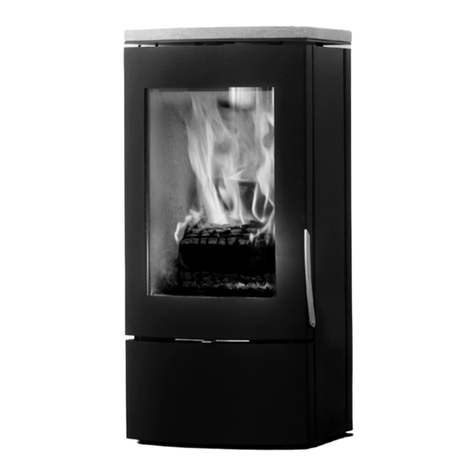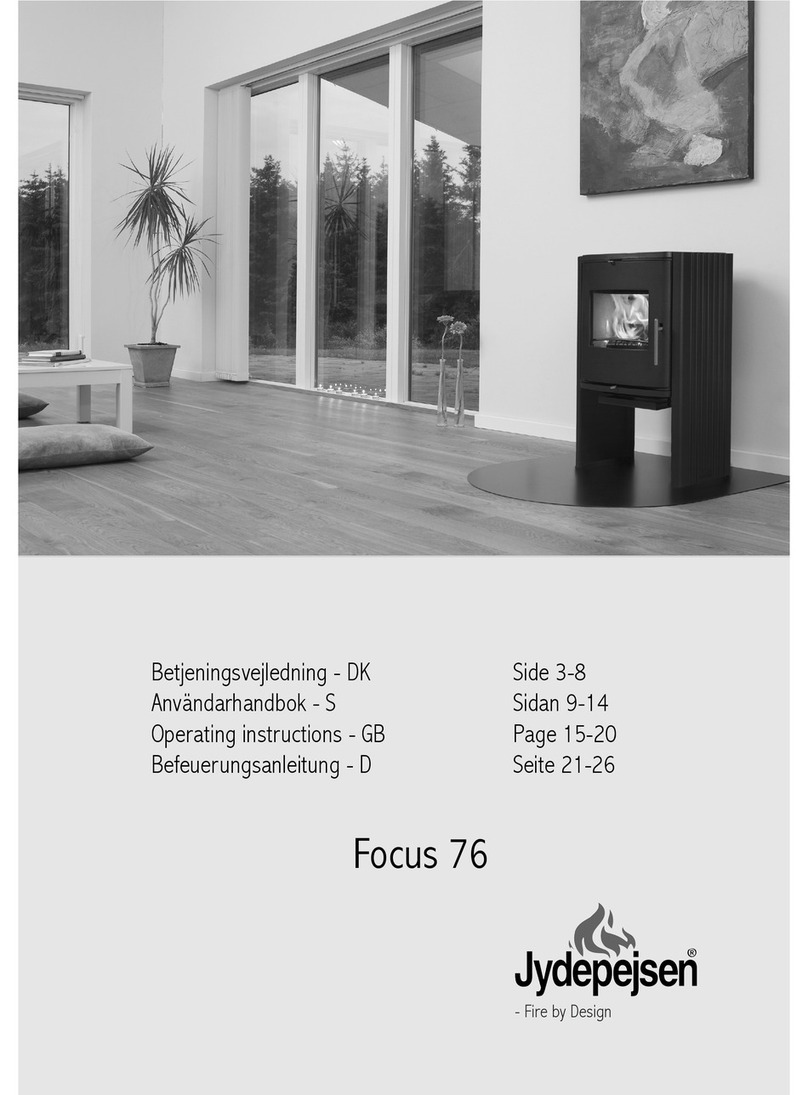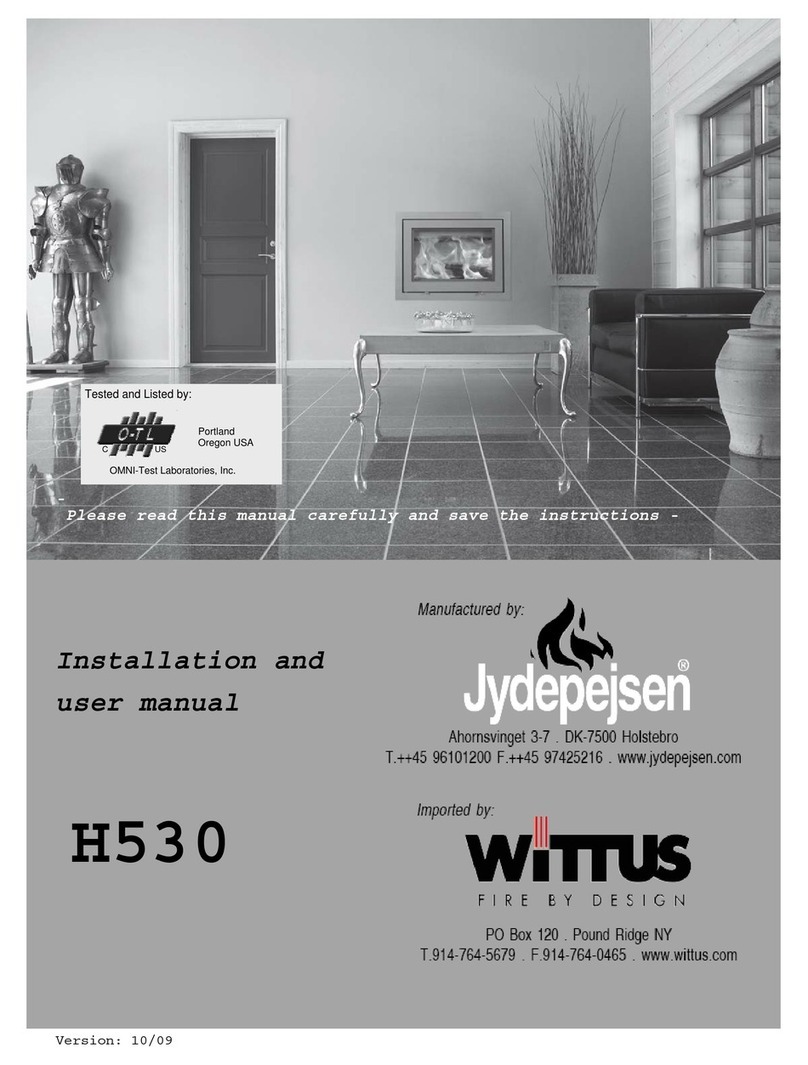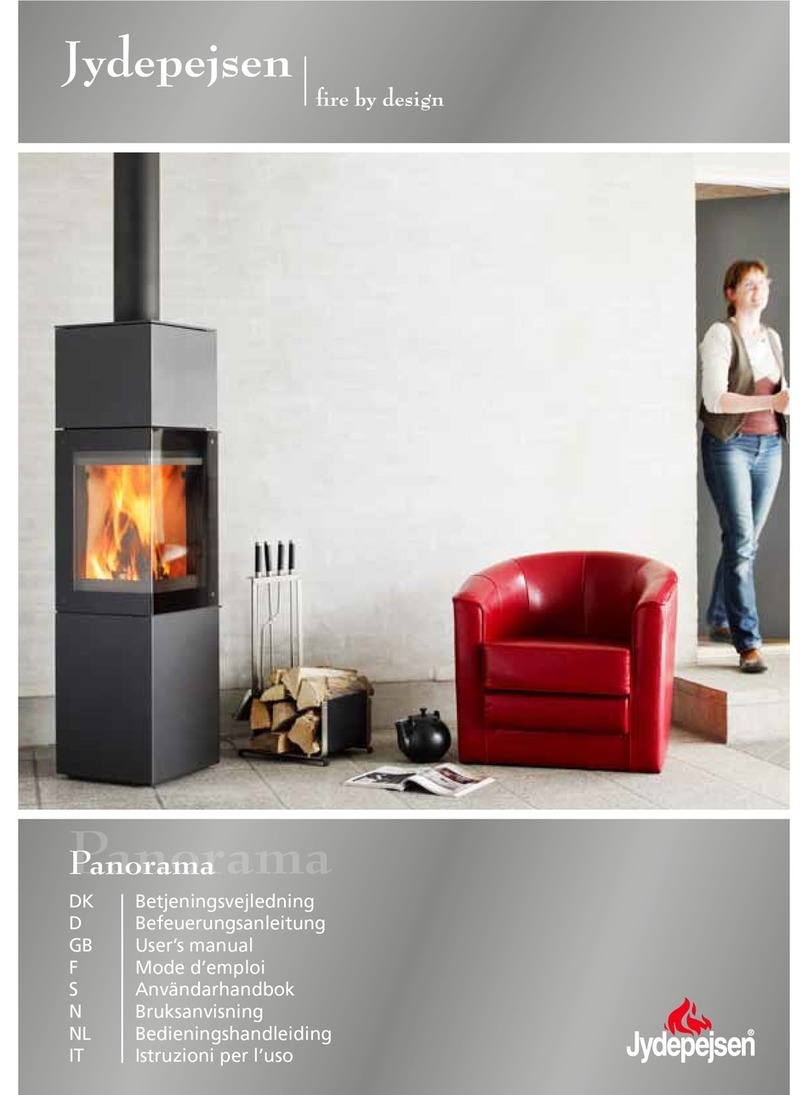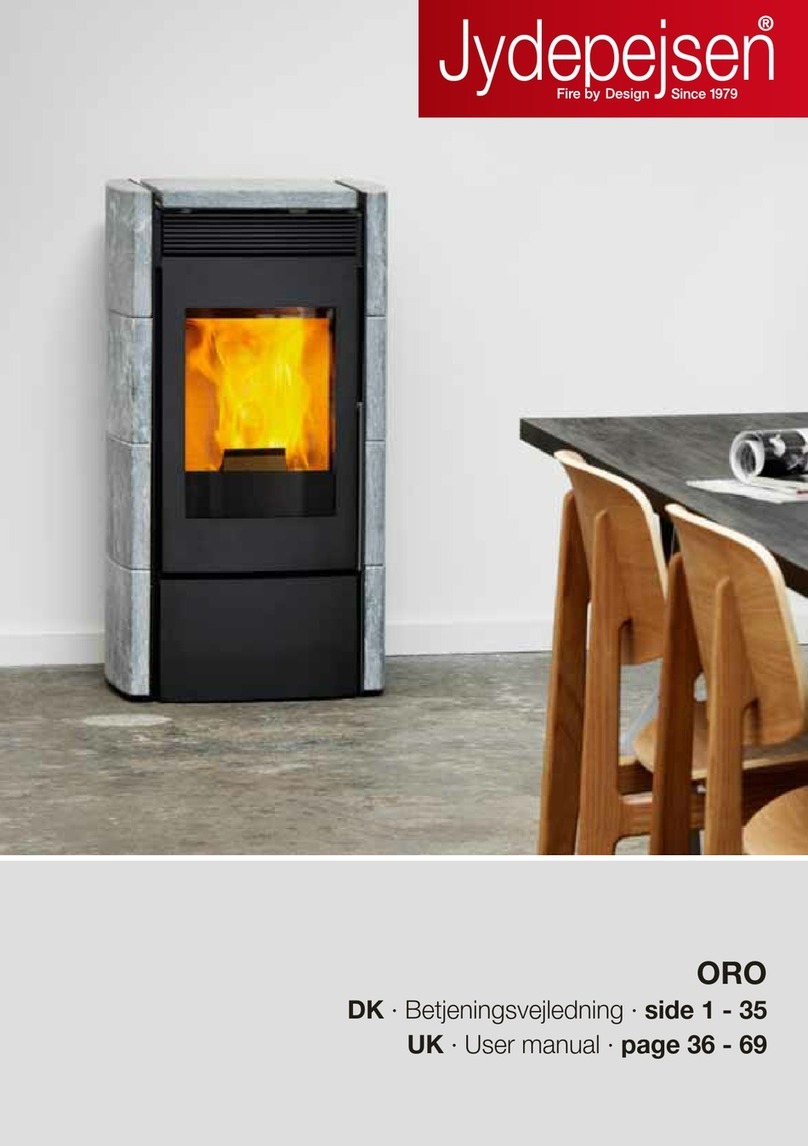4. Stoking instructions
It is very important to ensure that your chimney has a decent draught.The Alpha and Omega is the cooperation between the
chimney and the stove.Your dealer or your chimney sweep will be able to guide and advice you on your chimney conditions.
When this is settled, the next step is that you make the stove and the chimney cooperate.This is done by following the
operating instructions and using fuel which inflames easily in the combustion chamber, until a decent draught is obtained.
For further information on correct lighting and stoking, please refer to Jydepejsen´s Manual for installation and stoking.
Please note that the stove paint will harden during the first few initial lightings.This means that the stove will generate
smoke and an odour of paint, which will dissipate after about 1 hours´s operation. It is a good idea to ensure effective
ventilation during this phase.Also, touching the stove should be avoided, since this may cause the paint to scale.
The stove will expand and contract during the lighting and cooling phase, possibly resulting in creaking noises.This phe-
nomenon is completely normal for sheet-iron stoves, and cannot be regarded as a fault.
All Jydepejsen wood-burning stoves are intermittent, which means that new wood should be added when there is a layer
of embers in the burning chamber.
Problems lighting the stove or with insufficient burning are normally due to wet wood or lack of draw in the chimney.
Check that the chimney is not blocked or partially blocked, and that the baffle plates are correctly positioned.
In the event of overheating or chimney fire, shut off the air supply completely and follow developments carefully.
Once there is a good bed of embers in the stove, you can add wood. It is important not to open the door while there are
flames in the stove, as this may cause smoke to flow out into the room.Add wood on the basis of your heating require-
ments.The amount of wood you need to add will depend on the season. However, never add more than 2 kg of wood
every 1.5–2 hours. Please remember that the exterior surfaces of the stove in particular will become very hot during firing.
Start-up phase
1. The air regulation, which is situated in continuation of the handle, is turned up to maximum. The adjustment is set
at max. when it is nearest the door handle.
2. Place firelighters and kindling in the bottom of the fire chamber.
3. The kindling, approx. 1.5 kg, should be built up like a matchstick house.
4. Then light the fire and close the door. If condensation forms on the glass, leave the door ajar.
5. Turn the air regulation down after approx. 10 minutes. The level of adjustment required depends on the chimney
draft. Adjust the air regulation until you have gentle flames.
Stoking
1. Turn the air regulation up to maximum.
2. To minimise the vacuum, the door should be left ajar for approx. one minute before being fully opened.
3. Open the door slowly.
4. Place 2 – 3 pieces of wood inside the fire chamber in an upright position to produce the best flames.
No more than 2.2 kg of wood should be filled at a time.
5. Close the door.
6. Turn the air regulation down once the wood has caught.
GB [4]



















